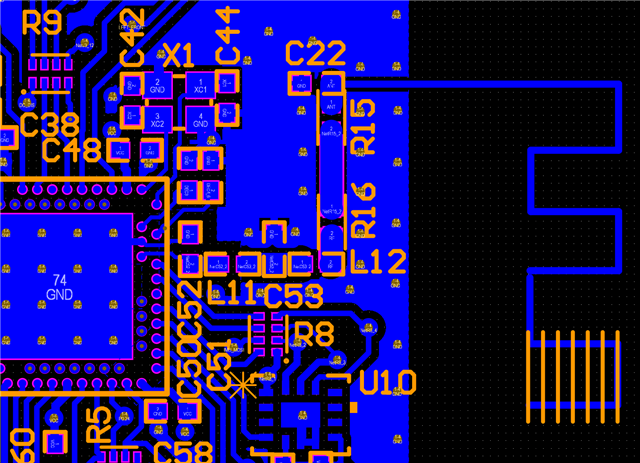Hi,
I have a design which mostly follows the reference designs.
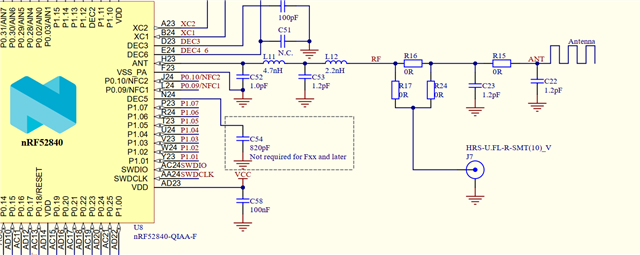
I've added a Resistor Network R16/17/24 to allow a UFL connector to connect to the ANT and isolate it from the NRF RF Output
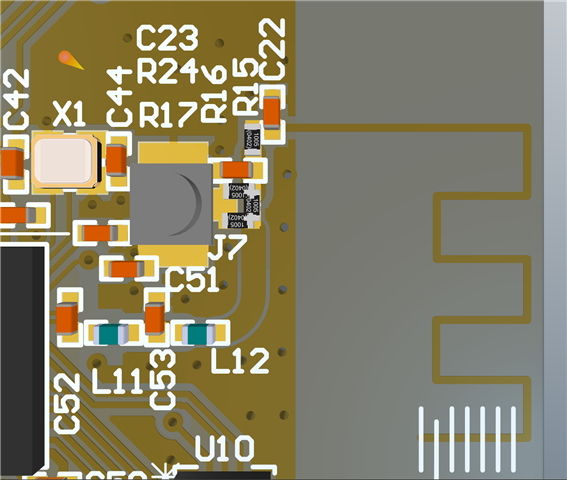
I would like it if you can confirm if the process of tuning is correct.
- R16,R17,R24,C22,C23 all removed to isolate
- I have a VNA and set it to sweep from 1.5GHz to 3.0GHz.
- Open - R16/R17/R24 all removed
- Short - R24=0R, C23=0R, R15=Open
- 50ohm Load - R24=0R, C23=50ohm R15=Open
I do an initial sweep and see that the lowest loss needs to move up higher in frequency, so I cut some ANT track.

After cutting I see that the frequency has moved such that 2.44GHz is the lowest.
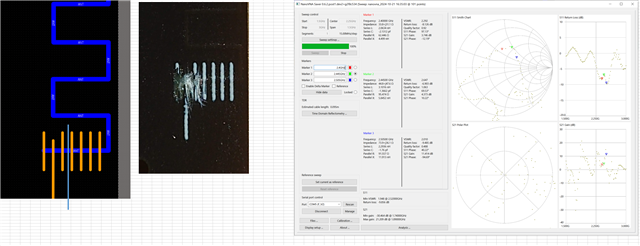
I then recalibrate over a Freq range of 2.35G -> 2.55G.

Then I populate some Matching Network values C23=3.0nH, R15=1.0pF, R24=0R, C22=Open

However it seems that I have cut too much ANT and then the frequency is too high.
So I then get a fresh board without ANT cuts, populate the same C23=3.0nH, R15=1.0pF, R24=0R, C22=Open and then cut again to minimise the return loss and confirm ANT length and matching values.
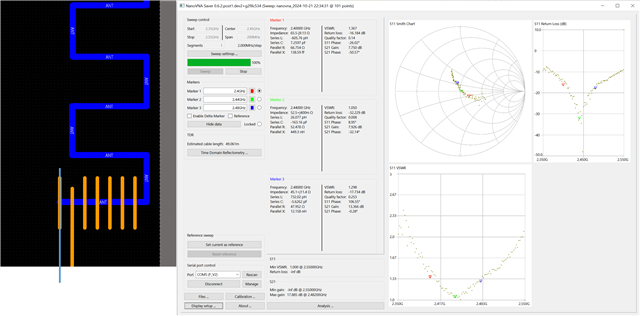
Could you please comment on this tuning process?
Thanks!



